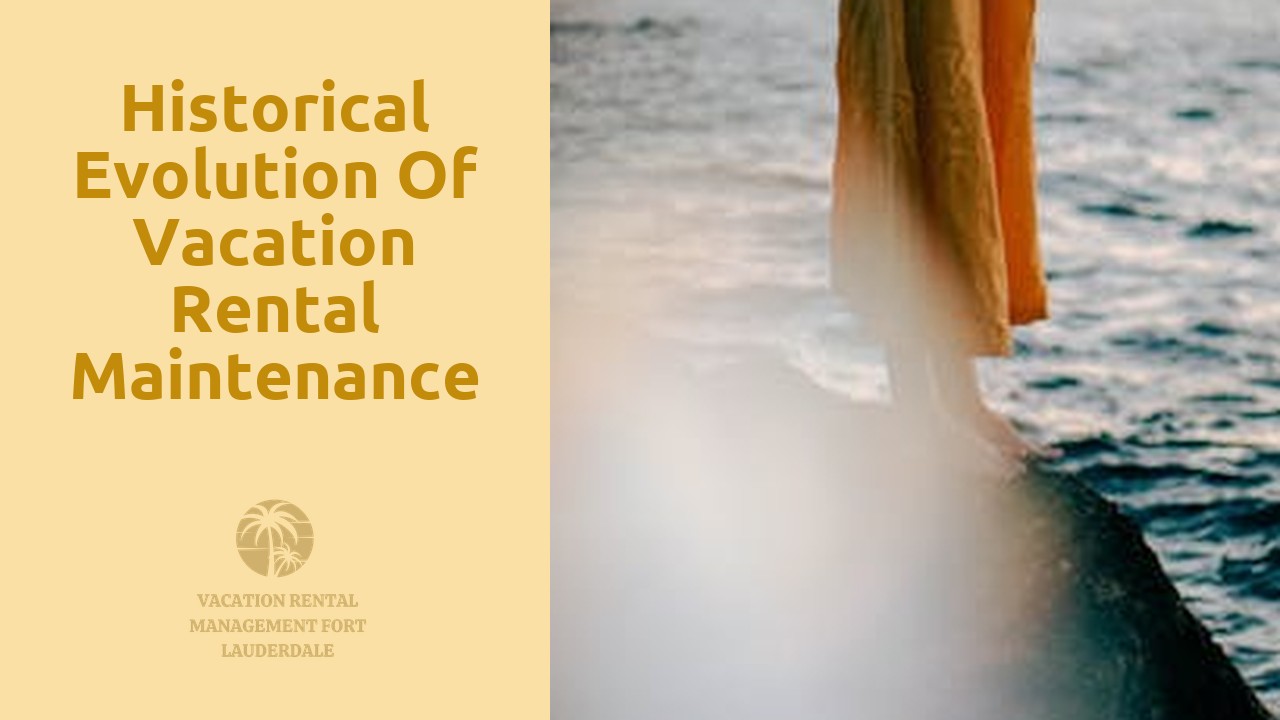
Historical Evolution of Vacation Rental Maintenance and Repairs
Table Of Contents
Challenges Faced in Maintenance
Maintenance of vacation rentals poses several challenges that property owners and managers must navigate. One significant issue is the constant wear and tear that guests inflict on the property. High turnover rates can lead to accelerated deterioration of furnishings, fixtures, and appliances, requiring frequent repairs and replacements. This continuous cycle of maintenance can strain a property's budget and resources, making it challenging to keep up with the upkeep of the rental.
Moreover, the seasonal nature of vacation rentals adds another layer of complexity to maintenance challenges. Owners often experience peaks and valleys in bookings, resulting in fluctuating maintenance needs. During peak seasons, the property may require more frequent inspections and repairs to ensure a positive guest experience. Conversely, during slower periods, maintenance tasks may be overlooked, potentially leading to a decline in the overall condition of the rental. Balancing these seasonal variations while maintaining consistent upkeep can be a demanding task for property owners and managers alike.
Addressing Issues with Property Inspections
Property inspections play a crucial role in ensuring the upkeep and safety of vacation rental properties. However, issues can arise during these inspections, especially when trying to balance thoroughness with efficiency. One common challenge faced is the limited time allocated for inspections, which can result in overlooking potential maintenance issues that may escalate over time. This highlights the importance of having a systematic approach in place to streamline inspections and ensure that all areas of the property are adequately assessed.
Moreover, communication breakdowns between property managers and maintenance staff can lead to unaddressed issues post-inspection. It is vital for all stakeholders involved in the maintenance process to have clear lines of communication and well-defined responsibilities. Implementing a comprehensive reporting system can help track inspection findings and facilitate timely resolution of maintenance issues. By addressing these issues with property inspections proactively, vacation rental owners can enhance the overall maintenance standards and guest experience.
Standardizing Maintenance Protocols
Standardizing maintenance protocols is crucial for ensuring consistency and efficiency in property upkeep. By establishing clear guidelines and procedures, property managers and maintenance staff can effectively address issues in a systematic manner. Standardization helps to streamline operations, minimize errors, and improve overall maintenance outcomes. It also facilitates easier training of new staff members and provides a structured framework for monitoring and evaluating maintenance activities.
Moreover, standardized maintenance protocols contribute to enhancing the guest experience by ensuring that properties are well-maintained and in optimal condition. Consistent maintenance practices help to prevent potential issues before they escalate, thereby reducing the likelihood of guest complaints and negative reviews. By adhering to established protocols, vacation rental property owners can demonstrate their commitment to quality and professionalism, ultimately leading to improved guest satisfaction and loyalty.
Developing Best Practices Guidelines
Developing best practices guidelines for vacation rental maintenance is crucial to ensure properties are well-maintained and guests have a positive experience. These guidelines serve as a roadmap for property managers and maintenance staff to follow, outlining the necessary steps and procedures to keep the rentals in top condition. By establishing clear and detailed best practices, property managers can streamline maintenance processes, reduce downtime, and improve overall efficiency.
When creating these guidelines, it is essential to consider various factors such as the type of property, its location, and the specific maintenance needs it may have. Customizing best practices to fit the unique requirements of each vacation rental can lead to better outcomes and increased guest satisfaction. Property managers should also regularly update and refine these guidelines based on feedback, industry standards, and technological advancements to ensure they remain relevant and effective in the long run.
Future Trends in Maintenance
Moving forward, the future of vacation rental maintenance is slated to be revolutionized by the integration of IoT, or the Internet of Things. This technology allows for a seamless connection between devices and systems, enabling predictive maintenance to anticipate and address issues before they even arise. By utilizing IoT sensors and data analysis, property managers can proactively identify potential maintenance needs, leading to increased efficiency and reduced costs in the long term.
Moreover, the incorporation of artificial intelligence (AI) in maintenance processes is another trend set to reshape the industry. AI-powered algorithms can analyze vast amounts of data to optimize maintenance schedules, prioritize tasks based on urgency, and enhance overall decision-making processes. This advancement not only streamlines maintenance operations but also enhances the guest experience by ensuring properties are well-maintained and in optimal condition.
Utilizing IoT for Predictive Maintenance
Utilizing IoT technology for predictive maintenance is revolutionizing the vacation rental industry. By implementing sensors and smart devices in properties, property managers can now proactively monitor the condition of various systems and appliances. These IoT devices provide real-time data on the performance and health of equipment, enabling timely interventions and preventing costly breakdowns.
Property owners can set up alerts and notifications for potential issues detected by IoT devices, allowing them to schedule maintenance before problems escalate. Additionally, predictive maintenance helps in optimizing repair schedules and reducing downtime, ultimately enhancing the overall guest experience. With IoT technology, property managers can ensure that vacation rentals are well-maintained and in optimal condition, leading to increased guest satisfaction and positive reviews.
Related Links
Top 10 Cleaning and Housekeeping Services for Vacation RentalsWhy Regular Property Inspections are Important for Vacation Rentals
Roundup of Landscaping and Exterior Maintenance Tips for Vacation Rentals
Review of Appliance Maintenance and Upkeep for Vacation Rentals
Why Cleaning and Housekeeping Services are Essential for Vacation Rentals